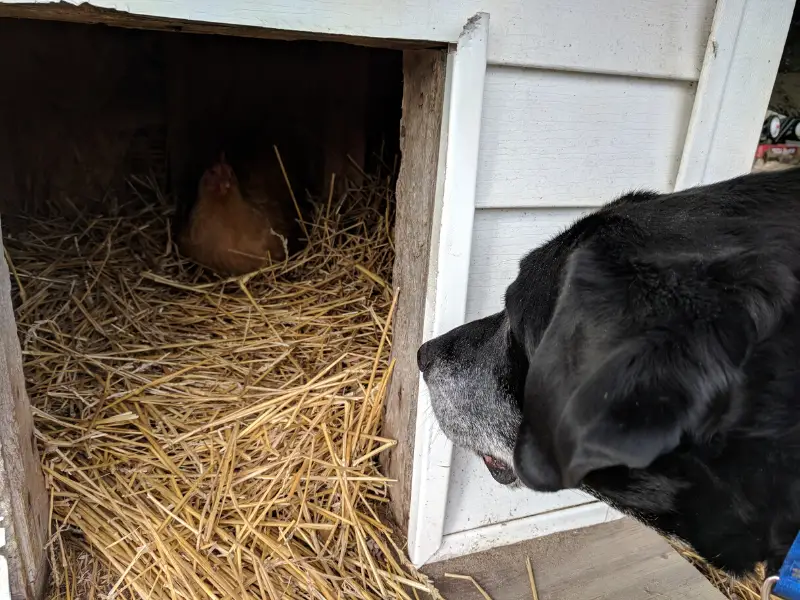A lot people think of homesteads as many sprawling acres of pasture, fences, barns and livestock roaming about. You don’t have to have a large homestead to have livestock though. There are many types of animals that are suitable to hobby farms, micro-homesteads and even urban homesteads.
Whether you are looking for animals for pets, meat, eggs, or other products there are some that are ideal for smaller areas. There are also some that you’d consider too large for a hobby farm, but actually have smaller breed options that may just be suitable for your situation. Of course, you should always check with your municipality so you comply with any local ordinances.
I’ve compiled a small farm animals list which also has the minimum recommended homestead size to successfully raise those breeds. We’ll then discuss each critter a bit more thoroughly to help you determine if it’s a good choice for your homestead or farm along with additional resources for more information.
| Animal | Minimum Homestead Size | Purpose |
| Bees | Urban | Honey |
| Quail | Urban | Eggs & Meat |
| Pheasants | Urban | Eggs & Meat |
| Chickens | Urban | Eggs & Meat |
| Rabbits | Urban | Meat & Fur |
| Dwarf & Pygmy Goats | Small Rural | Milk |
| American Guinea Hog | Medium Rural | Meat |
| Miniature Sheep | Medium Rural | Wool, Milk & Meat |
Honeybees
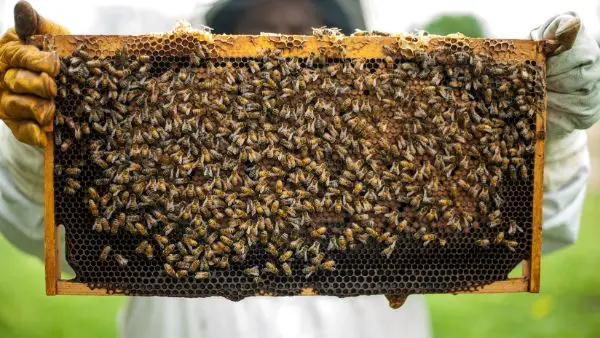
Yes honeybees are allowed in many cities including Detroit, Chicago, and New York, as well as many smaller cities across North America. The urban homesteader should do some thorough research as to the restrictions and zoning in their city before going any further with a beekeeping plan. Some municipalities consider beekeeping an agriculture activity and have zoning in place that restricts agriculture to only certain areas.
Most rural areas will allow beekeeping but there are still many laws and restrictions to be aware of at not only the local level but also the state level. Because of the decline of honeybees due to disease there are many restrictions on the import and export of bees across state lines to reduce the spread of those diseases.
Beekeeping is not something you can jump into as a weekend project. It will take many hours of research to learn everything you can before starting a beehive to be sure that you are able to keep up with an endeavor like this and also to be able to maintain the health and safety of your bees.
Finding local beekeepers or associations in your area is great place to ask questions and see what the hobby is all about. A great resource for the beginner is Amber Bradshaw’s book Beekeeping for Beginners which you can find on Amazon.com. Her book is written with the very beginner in mind and takes you step by step through the process with lots of pictures and illustrations.
Quail
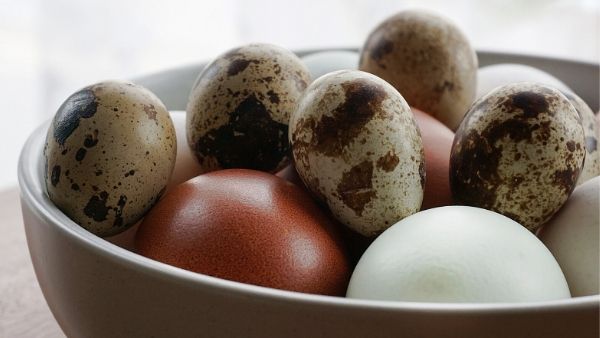
Quail are the ultimate beginner poultry bird especially for the urban homesteader. They take up very little room as their cages can be stacked vertically and easily could fit on a backyard patio, porch or balcony. Quail are also much quieter than chickens so they will be less likely to disturb your neighbors or attract unwanted attention.
Quail have delicious little eggs that by many sources are even healthier than chicken eggs and are even said by some to have other healing properties. Some breeds of quail can lay upwards of 300 eggs a year. They are quick to mature and start laying eggs at around 2 months old.
Quail are also raised for meat and although they only weigh 4 or 5 oz. dressed the meat is very tender and tasty. Quail can be harvested for meat in as little as 7 or 8 weeks. This is a quick turnaround so what they lack in size could be made up for in numbers.
Cages for quail can be completely enclosed with mesh or they could be kept in coops similar to chickens. Having a coop gives them a little more room to roam and to forage for insects. The advantage of cages is they are stackable to conserve space.
The basics of raising quail are pretty straightforward. In addition to shelter they will need food and water available at all times and good housekeeping by their owners to keep everything clean and the odor under control. Quail should not be fed chicken food but rather a special gamebird mix to get the proper protein and nutrients they need. A practical guide for the beginner is Urban Quail-keeping by Karen J. Puddephatt. You can get it on Amazon.com.
If you just want to dip your toe into raising quail you may have to find a local breeder in order to just purchase a few chicks or a breeding set because all the online hatcheries have a minimum order of 50 to 100 chicks or eggs for incubating.
Pheasants

Pheasants are commonly raised for meat, eggs, as pets or for release into the wild. Or a combination of all these reasons. Pheasants are beautiful birds that were imported to North America from China long ago. Their wild population has declined over the last half century or so mostly due to less habitat available because of more aggressive farming techniques.
Some people are under the impression that releasing pheasants into the wild will help the local population, but organizations such as Pheasants Forever discourage this practice because of high mortality rates of released pen raised birds among other reasons. Rather, they do encourage pheasant lovers to help with pheasant habitat improvements instead to allow wild populations to expand naturally.
Raising pheasants for meat and eggs though is a good way to get a little variety into the homestead diet. Farm-raised pheasant is just as delicious as the wild game variety but without having to be careful of not biting down onto a bird shot BB. The breast is the sought after meat on a pheasant because the rest of them is pretty scrawny.
Yes you can eat pheasant eggs! The eggs are very tasty and similar to chicken eggs with a bit richer flavor. Pheasants will lay eggs almost daily through the warmer months. Eggs can also be incubated to raise the next generation of pheasants on your homestead.
Keeping pheasants is similar to keeping chickens and some people keep them in the same run. They do require more space per bird (15-20 sq. ft.) than chickens do and also should be fed a gamebird food that has higher protein than chicken feed. Storey’s Guide to Raising Poultry from Amazon.com is a great resource for not only gamebirds like pheasants but for many other varieties of backyard poultry.
Chickens
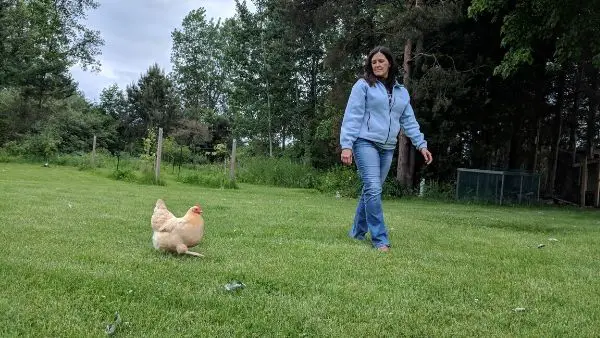
Like many homesteaders, chickens were our “gateway” livestock critter when we first started homesteading. One trip to your local farm big-box store and you could have everything you need (including chicks) to get started in your chicken-keeping endeavor. Although a bit more research should take place than that sort of spur of the moment purchase.
The beginner planning for their first backyard chickens should consider the following questions before bringing home chicks:
- Layers or meat birds? Or dual-purpose?
- What breeds are best in my area?
- What should we use for a brooder?
- What equipment do I need?
- Where will the coop go?
- Build a DIY coop or buy a pre-built?
- Free-range or caged?
- Where to buy chicks?
Should you get layers, meat birds or dual-purpose? My recommendation is if you’re after farm-raised chicken meat than order a bunch of meat birds such as Cornish Cross or Jersey Giants, raise them to maturity and process them all at once.
There are so many different egg-laying breeds and some are more suitable to different climes so some research should be done for your area. We have Buff Orpingtons and Barred Rocks here in Michigan and they’ve done absolutely fine with our cold weather. Some breeds like the Buff Orpington are considered dual-purpose, but we prefer to just raise our hens for eggs. If you bought a mixed run instead of a straight run of all females then culling out the roosters for the freezer as they mature could be an option.
For information on all the equipment you will need and details about coops and pens, a good guide such as Storey’s Guide to Raising Chickens or something similar will be a great help. We bought this guide before we bought our chickens and learned as much as possible so we could be successful. You can find it on Amazon.com very reasonably priced.
Building a coop and pen is a fairly straightforward DIY project. There are many different styles to choose from, but we prefer to have a raised coop so the girls can go underneath for shade or shelter. Being proactive against predators can mean life or death for your birds. We lost our first flock to marauding raccoons and had to start over. There’s a playlist of videos on our YouTube channel regarding chicken predators and ways to stop them.
We do let our chickens free-range most of the time. I believe that adding wild greens and insects to their diet gives their eggs more nutritional value. You don’t necessarily have to though if you don’t have room or don’t want your landscape torn up (because they will). Or you could let them out only when supervised in the evening.
It will be tempting to bring home baby chicks from Tractor Supply or other local farm and feed store, but you may not be getting exactly what you wanted. Ordering them online from a reputable hatchery or ordering them from your local feed store will ensure you get the right number of each breed and sex that is right for your setup.
Rabbits
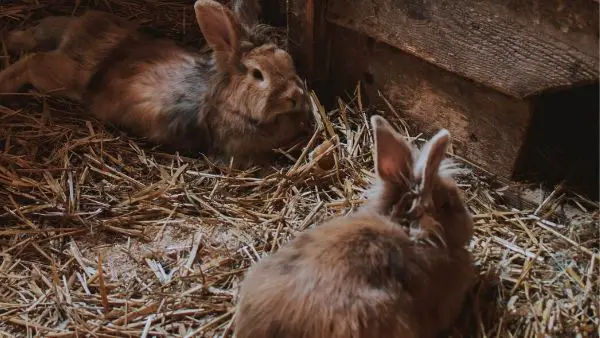
Raising rabbits for profit is more suited to larger productions, but a smaller homesteader could benefit from fresh organic rabbit meat and fur for homestead projects. Getting started is pretty inexpensive with a few hutches, water bottles and food bowls being the only items really needed.
A word of caution – a lot of people find rabbits very cute. I’m sure there’s been many a homesteader that planned on filling the freezer with farm raised rabbits but ended up with a bunch of pets instead because some of the family got attached. Just be sure you know what your getting into and maybe start with a few (just in case).
I have not personally raised rabbits myself, but as a kid growing up one of my friends had about an acre of rabbits hutches in their backyard. Some were for meat and some were for pets and show. I’ll refer you to The Elliot Homestead’s article for more information on raising rabbits for meat.
Dwarf & Pygmy Goats
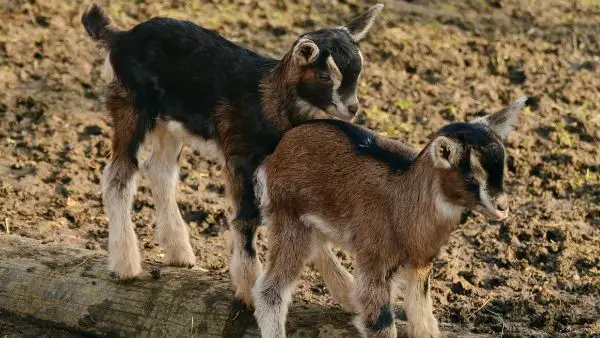
Pygmy goats and Nigerian Dwarf goats are two distinctly different breeds of miniature goats that are both ideal for a small homestead. They will require more room and more attention than chickens or other birds, but that can also be very rewarding as goats can be quite friendly and affectionate.
Pygmy goats will produce milk but not as much as the Nigerian. Pygmies were bred to be a compact meat source while the Nigerians are bred to be milk producers. Not only do Nigerians produce more milk per day, they also produce milk almost twice a many days a year as Pygmies.
Raising goats is definitely an endeavor that will require much more research before getting started. I suggest Sue Weaver’s Mini Goats: Everything You Need to Know to Keep Miniature Goats in the City, Country or Suburbs from Amazon.com as a starting point.
American Guinea Hog
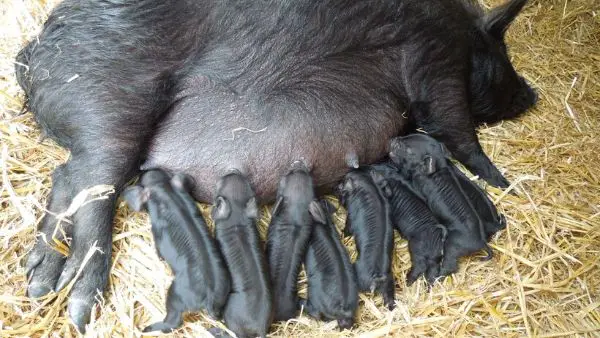
Although American Guinea Hogs are small that are surely not the same as Guinea Pig – completely different animal. Guinea Hogs are one of the smaller breeds of meat hog but will still require quite a bit of room on the homestead to raise properly. The meat gets it’s best flavor if they are allowed to forage and pasture for some of their food.
For more information and to find a breeder near you check out the American Guinea Hog Association’s website.
Miniature Sheep

Miniature sheep can be kept on small homesteads, although they are well suited to having some pasture for grazing. Just a few acres of pasture may be all you need if you opt for one of the smaller breeds such as Babydoll, Harlequin, or Shetland.
The miniature sheep breeds are mainly used as pets or for wool. If you were interested in raising sheep for meat or milk in addition to wool, you would probably want to consider a medium size breed such as Dorset or Tunis.
Honorable Mentions – Maybe Not with Close Neighbors
I purposely left a few animals off the list that some may expected to be on it. The main reason is that this list is for those with smaller acreage homesteads which also means they could have neighbors that are fairly close. Some of the Honorable Mentions can do well on smaller farms but for a variety of reasons such as noise and amount of excrement they would be better suited in a more rural setting. But hey if your neighbors don’t mind or are far enough away, give these other livestock animals a try:
- Guinea Hens
- Ducks
- Geese
- Turkeys
- Donkeys
- Emus
- Miniature Cattle
- Miniature Horses
Hopefully this gave you some ideas to think about and types of animals to consider. This article is intended as a jumping off point and I encourage you to dig deeper into whatever livestock you’re interested in to ensure success. You can check out our Resources page for product recommendations and additional information.



